Breaking News: Accident on Nilgiri South in Nepal
Sad news from the Austrian expedition to the South Face of the 6839-meter-high Nilgiri South in the Annapurna massif in Nepal: A spokesman of the Austrian Foreign Office confirmed to me that one of the three climbers who had started their first summit attempt last Thursday was missing. According to him, the climber slipped during the descent and fell about 800 meters deep while his two team mates were looking on in horror. The two climbers descended to Base Camp. Fog and snowfall hampered the helicopter rescue operation. The search was going on, the spokesman said. He gave no details about the climber who fell into the depth adding that they were in touch with his relatives.
![]() read more
read more
First summit attempt on Nilgiri South
The push is on. The Austrian Team that tries to first climb the South Face of the 6839-meter-high Nilgiri South in the Annapurna massif in Nepal has set off for their first summit attempt. I was told this by a speaker of Hansjoerg Auer in Austria. On Wednesday Hansjoerg had tweeted that their acclimatization was coming to an end and that their first attempt was about to start. Auer is climbing along with his compatriots Alexander Bluemel and Gerhard Fiegl.
![]() read more
read more
Three questions for Ueli Steck
The fall season in the Himalayas is not over yet. Although the expedition on Mount Everest as well as those on the eight-thousanders Makalu, Dhaulagiri and Annapurna were recently canceled due to dangerous conditions on the mountains, there are still a few climbers under way on the highest mountains. So the team of South Korean Sung Taek Hong, who wants to tackle the Lhotse South Face again, decided in favor of a later expedition start. And also Swiss climber Ueli Steck and American Colin Haley have just completed their acclimatization. They did it on separate ways. Steck climbed along with Tenji Sherpa through the North Face of the 6,640-meter-high Cholatse. “That was pretty cool. He is the first Sherpa who climbed this wall”, Ueli writes to me. “It’s nice to see how a ‘new’ generation of Sherpas is growing up, who are really interested in climbing and not just in business. I think that’s awesome!” Steck and Haley want to first repeat the extremely difficult route via the Southeast Pillar to the summit of the 7,804-meter-high Nuptse East which was opened in in 2003 – but contrary to the first climbers, the Russians Valerij Babanov and Yuri Kosholenko, in Alpine style. I sent Ueli three questions to Base Camp.
![]() read more
read more
Sherpa trio completes first climb trilogy
Anyone who has ever climbed with Sherpas knows: There are many powerful, really good climbers among them, who can make western climbers look quite old. It is no wonder that there have been Sherpas as team members in many first ascents of the world’s highest mountains in the Himalayas and the Karakoram – like Tenzing Norgay on Mount Everest in 1953, Pasang Dawa Lama on Cho Oyu in 1954 or Gyalzen Norbu on Manaslu in 1956. But always along with foreign mountaineers. That has now changed.
![]() read more
read more
Thomas Huber: “In the hands of fate as never before”
It was a hot, but from the climbers’ perspective a meager summer in the Karakoram: Most expeditions left Pakistan without summit successes. The German “Huberbuam” Thomas and Alexander, the Swiss Dani Arnold and the Austrian Mario Walder also returned empty-handed, but alive and “in one piece” – which was not a matter of course considering their experiences at the Latok group. Thomas, aged 48, the elder of the Huber brothers, told me the story.
Thomas, this summer you actually wanted to tackle the North Face of the 7,145-meter-high Latok I which has not yet been climbed. This did not happen. Why?
We have seen the North Face only from afar. We realized pretty soon that is was impossible to climb the wall under these conditions. It would have been possible to tackle the North Ridge. But this did not happen too, because another mountain battered us so that we lost our motivation and courage to push ourselves to the absolute limit again.
![]() read more
read more
Successes in a row on Manaslu
The success stories from the eighth highest mountain on earth are piling up. On Wednesday and Thursday at least 76 climbers reached the 8,156-meter-high summit of Manaslu, said the “Himalayan Times”. The Nepalese operator Seven Summits Treks reported about 50 summit successes of their clients and Sherpas alone. On Friday Dominik Mueller, head of the German expedition operator Amical Alpin, reached the highest point of Manaslu too.
![]() read more
read more
Kuriki: “I’ll enjoy climbing including hardship”
Next try. In these days, Japanese climber Nobukazu Kuriki will start his second summit attempt on Mount Everest. As reported before, his first try had failed last weekend, at about 7,700 meters, the level of the Geneva Spur, 200 meters below the South Col. Kuriki is the only climber who tries to scale Everest this fall, climbing alone without bottled oxygen. I have succeeded in contacting the 33-year-old at Everest Base Camp.
Nobukazu, what went wrong during your first summit attempt?
There was deeper snow than I expected, and it took too long to plow through it.
You decided to pitch your tent for your highest camp at about 7,700 meters instead of the usual South Col. Why?
![]() read more
read more
15 climbers on top of Manaslu
This year’s first summit successes on Manaslu are reported: Chhang Dawa Sherpa, head of the Nepalese operator Seven Summit Treks, said that nine foreign mountaineers and six Climbing Sherpas summited the eighth highest mountain on earth this morning. More teams are on the way up and plan to reach the highest point at 8,156 meters on Thursday or Friday. Dan Mazur from Summit Climb tweeted from Camp 4 at 7,450 meters announcing to climb towards the summit tonight. Rainer Pircher from Amical alpin is in Camp 4 too. Dominik Mueller, head of Amical, and his clients are spending the night at Camp 3 at 6,800 meters and want to climb up to Camp 4 on Thursday.
![]() read more
read more
Kuriki turns around on Everest
It would have been a real bang. And probably the headline was already prepared: “Historical Everest climb with only one complete finger”. But this headline will be put away in a drawer until further notice. Nobukazu Kuriki has abandoned his first summit attempt on Everest. “I tried hard taking all my energy, but it took too much time to move in the deep snow”, the 33-year-old Japanese tweeted. “I realised if I kept going, I wouldn’t be able to come back alive.” It is still unclear how high exactly he climbed. According to his GPS signal messenger, he did not reach the South Col. Kuriki had made his “last Camp”, as he wrote, at about 7,700 meters, at about the level of the Geneva Spur, 200 meters below the South Col. From there, it would have been a real marathon stage up to the 8,850-meter-high summit – in particular because the Japanese was climbing solo above Camp 2, not using bottled oxygen, and the route was neither prepared nor secured with fixed ropes.
![]() read more
read more
Dominik Mueller: “I feel absolutely safe”
The 8,136-meter-high Manaslu is probably the only mountain in Nepal, where currently almost everything is as usual in fall. “We have about 15 expeditions here, many of them small teams”, Dominik Mueller tells me by satellite phone from the about 4,800-meter-high Manaslu Base Camp in western Nepal. “All in all we have probably 120 to 130 summit aspirants.” Dominik is leading an expedition of his German operator Amical alpin, along with the mountain guide Rainer Pircher. The other members are ten clients, three Climbing Sherpas, a cook and four kitchen helpers. The Base Camp is not too crowded, says Dominik. “We have found a very nice place for our tents.” On Wednesday, the puja will be held, the traditional Buddhist ceremony to get the gods’ blessings for the climbers. Some expeditions – such as the group of Himalayan Experience that is led by the New Zealander Russell Brice – have been on the mountain for a while already.
![]() read more
read more
Dawa Steven Sherpa: “Ke garne! We carry on!”
There is a jinx on it. Two spring seasons on Everest in a row remained without summit successes (I ignore those of the Wang Jing team in 2014 because they were flown by helicopter to the high camp). In 2014, all commercial expeditions were cancelled after an avalanche had killed 16 Nepalese climbers in Khumbu Icefall. This year, the devastating earthquake in Nepal triggered an avalanche from the seven-thousander Pumori hitting Everest Base Camp and killing 19 mountaineers and support staff. Once again the spring season ended before it had really begun. What does this mean for the Sherpa people?
I called Dawa Steven Sherpa. Along with his father Ang Tshering Sherpa, the president of the Nepal Mountaineering Association (NMA), the 31-year-old is managing “Asian Trekking”, a Kathmandu-based leading operator for expeditions and trekkings in the Himalayas. Dawa Steven scaled Everest twice (in 2007 and 2008) and in addition the eight-thousanders Cho Oyu (2006) and Lhotse (2009). Under his expedition leadership more than 150 climbers have summited Everest. But Dawa Steven is also a tireless fighter for environmental and climate protection in the Himalayas. Furthermore he is leading “Resilient Homes” , a project of the “Himalayan Climate Initiative” to help earthquake-affected communities to rebuild their houses and other buildings – one more reason to talk to him about the current situation in Nepal.
![]() read more
read more
Steck: “The only way I can help the people of Nepal”
There are only 20 days left until Ueli Steck will return to Nepal. To the country where the 38-year-old Swiss top climber in the same year celebrated his probably most spectacular success as an extreme climber as well as the greatest fear of death that had nothing to do with mountain dangers. In spring 2013, a group of angry Sherpas attacked Ueli and his teammates Simone Moro and Jonathan Griffith in Everest high camp and threatened them with death. In fall 2013, Steck reached the 8091-meter-high summit of Annapurna, the eight-thousander with the highest fatality rate: solo, via the extremely dangerous South Face, on a partly new route, as always without bottled oxygen. It took Ueli only 28 hours to climb up and down.
This summer, he proved once again that he is able to climb mountains lickety-split, when he – as reported in my blog – scaled all 82 four-thousanders of the Alps within 62 days and overcame the distance between the mountains without engine power: by hiking, cycling or paragliding. I talked to Ueli about his tour de force through the Alps – and also about his upcoming exciting project in Nepal: on Nuptse, within sight of Mount Everest.
![]() read more
read more
Mothers’ meeting on Makalu
“We walked into base camp, dropped our packs, threw on our down jackets, and looked up. Makalu chose that moment to expose her summit”, Adrian Ballinger wrote on Instagram after yesterday’s arrival at the foot of the fourth highest mountain on earth. “Awe is the only word to describe the feeling.” Ballinger is leading a team of US climbers that is remarkable in several respects. First, it is even the only expedition on this eight-thousander in Nepal this fall. Second, the team will try to realize the first ski descent from the 8,485-meter-high summit. And third, three of the five expedition members are women, two of them mothers, and that’s not just commonplace in high-altitude mountaineering.
![]() read more
read more
PR with a permit
The despair in Nepal must be great. There is no other explanation for the fact that the government in Kathmandu called a press conference these days only to hand out a permit for an expedition. Japanese climber Nobukazu Kuriki received the written permission to climb Mount Everest this fall from the hands of Tourism Minister Kripasur Sherpa. “Kuriki is climbing at a time when there is confusion in the world about the safety in Nepal after the earthquake”, the Minister said. “This will be an example for other visitors to come to Nepal which is safe for mountain climbing.” The 33-year-old Japanese climber sang the same tune: “The main purpose of my climb is to spread the message that Nepal is safe for climbers and trekkers even after the earthquake.”
Kuriki – as reported – wants to climb Everest from the Nepal side, after the Chinese authorities gave all expeditions to Tibet the cold shoulder. Today Kuriki flew from Kathmandu to the Khumbu region for acclimatization. In 2012, in his last attempt to climb Everest in fall, the Japanese had suffered severe frostbite. Nine fingers had to be amputated. Like then, Kuriki again plans to climb solo and without bottled oxygen, this time on the normal route. The “Icefall Doctors” will prepare for him the route through the Khumbu Icefall.
![]() read more
read more
With nine finger stumps to the top of Everest?
It has gone out of style to climb Mount Everest in fall. This happened even though some of the most spectacular summit successes on the highest mountain in the world have been made in the post-monsoon period: Remember only the first ascent through the Everest Southwest Face by the British Doug Scott and Dougal Haston in September 1975 or the success of the US-American Carlos Buhler, Kim Momb and Lou Reichardt via the East Face in October 1983. However, the climbing season has moved more and more into spring since commercial expeditions have taken over on Everest – due to higher temperatures compared to fall and to the usually lower risk of avalanches. Since 2000, only 36 summit successes have been recorded in September or October – next to nothing compared with over 5,000 ascents in spring since the turn of the millennium. The last ascent to the top of Everest in fall dates from five years ago: In October 2010, the American Eric Larsen and five Sherpas reached the highest point at 8,850 meters. This fall, there will be another attempt to climb Everest from the Nepalese south side. According to the “Himalayan Times” the so-called “Icefall Doctors” – a group of high specialized Sherpas – arrived at Base Camp in order to fix a route through the Khumbu Icefall.
![]() read more
read more



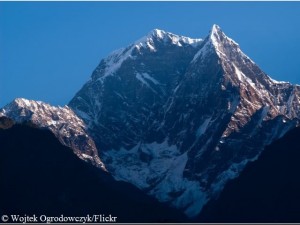

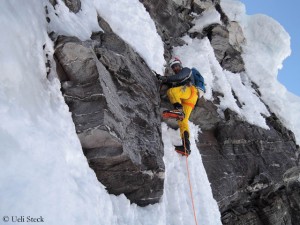
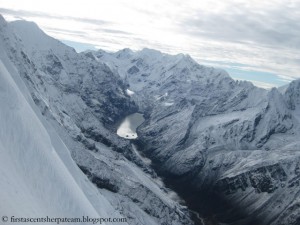
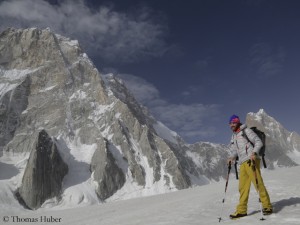
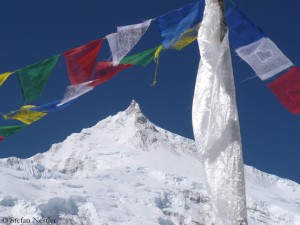
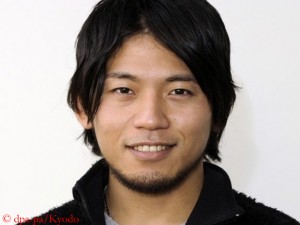
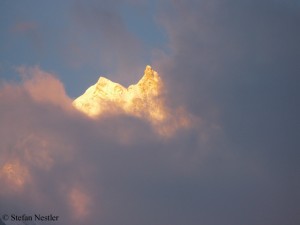
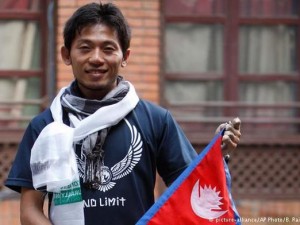

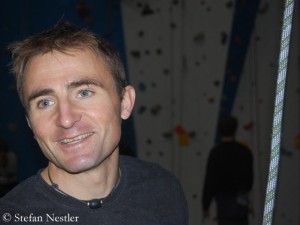
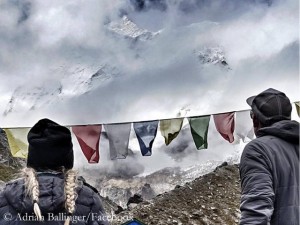
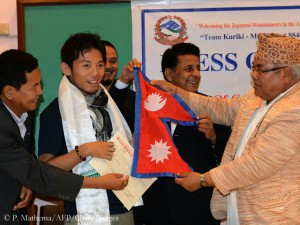
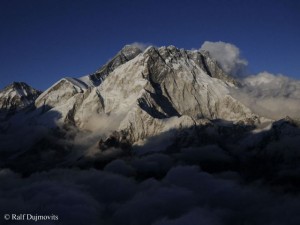





Feedback